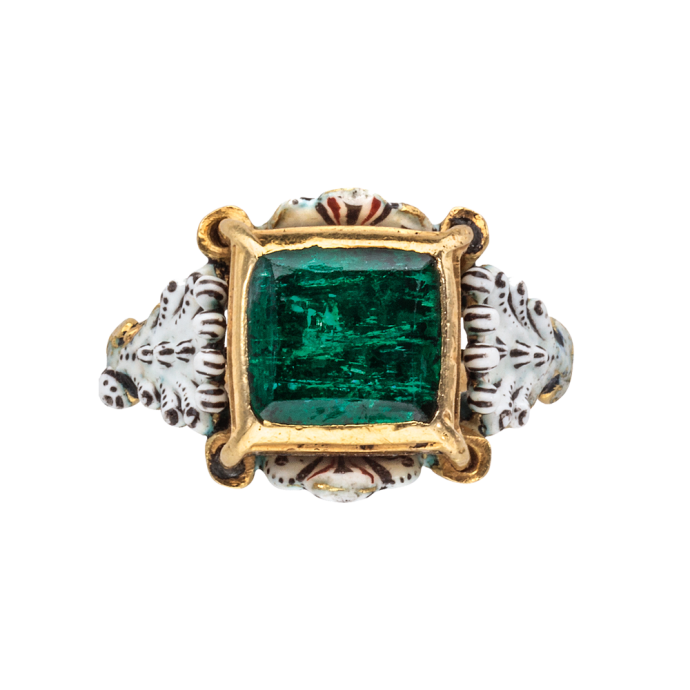


Emerald and Enamel Solitaire Ring
, c. 1680-1720


Emerald and Enamel Solitaire Ring
Description
Glittering New World emerald set off by lavish white enameled “trumpet” shoulders on a large impressive ring.
This flashy solitaire ring shows off a large Columbian table-cut emerald set with colored enamel on the trumpet-shaped shoulders and the underside of the bezel. The shapely form of the enamel shoulders and the vivid effects of color suggest the influence of Gilles Légaré, court jeweler to King Louis XIV, who published in 1663 a series of Baroque designs for rings that were widely disseminated, influencing goldsmiths throughout continental Europe.
The Spanish Conquistadors are credited with discovering emeralds in Columbia in the sixteenth century, and they went on to market them in European capitals. Along with diamonds, rock crystals, and rubies, emeralds are a popular gemstone in Renaissance and Baroque cluster rings of Spanish fabrication. The emerald was also a favorite at the French court of Louis XIV. Jewelry by Hungarian artisans also showed off emeralds, and well-traveled Hungarian artists and journeymen goldsmiths returned from obligatory tours of European cultural centers to adapt new forms and designs at home.
Symbolic of love, equated with happiness and hope, the emerald may have had a personal meaning for the giver as a token of sentiment.
Provenance
European Private Collection
Literature
Compare a ring in the Alice and Louis Koch Collection in the Swiss National Museum, Zurich, thought to be Hungarian from the second half of the seventeenth century (Chadour 1994, no. 745), and a necklace fragment made in Transylvania, late seventeenth century, in the Magyar Nemzeti Múzeum, Budapest (exh. cat. Schätze des Ungarischen Barock 1991, no. 171). For French examples, see Scarisbrick 1993, pp. 92-93, 98-99.